Courses and Instructors [Listed Alphabetically] |
| Classes are 75 minutes. Seating is first come, first served; there is rarely a problem finding a seat. |
 Bahl |
 Brack |
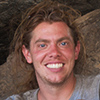 Cox |
 Georgia |
 Gottlieb |
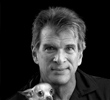 Lubow |
 Madden |
 Meredith |
 Messick |
 O'Connell |
 Ransome |
 Russo |
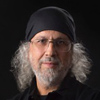 Sweet |
 Walkotten |
The Power of Simplicity and Expression |
||||
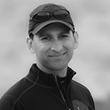 Nikhil Bahl
Bio • Website
|
What are you trying to say with your photography? Since photography is a form of visual communication, all photographers should ask themselves what kind of images communicate most powerfully. Nikhil believes that the answer is rooted in simplicity. Simple, graphic elements can hit you "between the eyes." Images with many elements, by contrast, lose power because the message may be muddled by distractions or not be obvious to the viewer. Simplicity is not simple. It requires clarity in thought, vision, process and technique. Using many concrete examples, Nikhil reveals the connection between simplicity and strong expression. His ideas will help you can make your images simpler and therefore more expressive and impactful.
Back to Top |
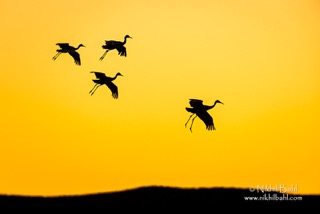
|
||
Water: An In-Depth Look |
||||
 Nikhil Bahl
Bio • Website
|
If you're a photographer that likes to interpret the same subject in different ways, then you definitely should tune into the creative possibilities in photographing water. Water is an endlessly fascinating and protean subject, yet it's one that many photographers view with a limited vision. Nikhil's presentation covers the gear required and variety of techniques he uses to "see" water—both liquid and frozen—in varied ways. Specifically, he discusses the different approaches he uses to capture both static and moving water, including shutter speed, lighting, time of day and perspective. Nikhil has two objectives: first, to help you get the most out of your gear and, second, to push the boundaries of interpretation when it comes to photographing one of nature's most amazing wonders.
Back to Top |
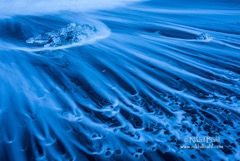
|
||
[Keynote Address] 50 Years of Brack: Presidents, Popes, Royalty, Celebrities, Villains, Wars and Riots |
||||
 Dennis Brack
Bio • Website
|
For more than five decades, Dennis Brack has been at the heart of the action in our nation's capital and beyond. He has photographed the famous and the infamous, the glorious and the tragic...and he's got stories to go with his great pictures. Come to his Saturday evening keynote address and see and hear one of nation's finest photojournalists.
Back to Top |
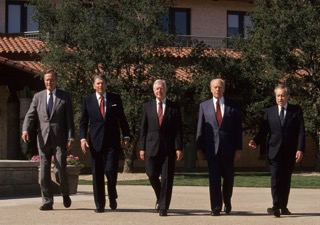
|
||
Hunter-Gatherer Societies: A Photographic Exploration |
||||
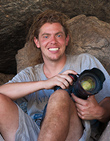 Jon Cox
Bio • Website
|
Since its early days, photography has been a valuable tool for explorers to document the places and people they have seen. Jon Cox follows in this long tradition of explorer-photographers, taking his camera to remote places where he has observed and recorded distinctive cultures. As a National Geographic Explorer, his focus has been on the Hadzabe in Tanzania and the Ese'Eja of Amazonia—among the world's last hunter-gatherer societies. He works with teams of experts in various disciplines along with indigenous people to perform "cultural mapping" of these obscure, threatened groups. Jon shows images from his book, Hadzabe Hunter Gatherers of Tanzania, and shares a first hand account of sitting around countless fires, hearing elders relate their oral history dating back thousands of years. He also discusses his work documenting the Ese'Eja lifestyle. Jon shares thoughts about how documentary photography projects have impacted his life (and others). And he explains that you don't need to go to the heart of Africa or the depths of the Amazon jungle to become a photographic explorer yourself.
Back to Top |
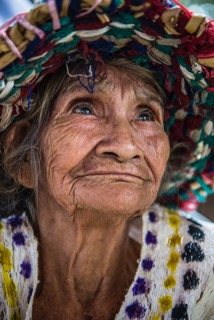
|
||
Capture the Night |
||||
 Chris Georgia
Bio • Website
|
Dramatic night photography—capturing the sky together with the earth's terrain—is more accessible than you might think. Christopher explains the equipment you need, which goes beyond camera and tripod to include the smartphone apps that help find locations of the night skies, as well as apps that help set up compositions and plan shoots. He explains, step-by-step, the methods he uses to create still images, panoramas, blended images and (briefly) time lapse (he discusses time lapse in detail in another class session). Christopher describes his shooting workflow, including setting up tripods and cameras for still shots and panoramas, focusing methods, the rule of 500, capturing star trails, and more. A world of nighttime celestial landscapes awaits you.
Back to Top |

|
||
Lightroom and Photoshop Workflow |
||||
 Chris Georgia
Bio
|
A tutorial from start to finish using RAW files straight out of the camera showing how to process images to get the most out of a RAW file. Christopher walks you through a RAW file in Lightroom to discuss what he does with each tool and why. Then he brings the image into Photoshop for finishing touches. [Note: You can bring your own laptop if you wish to follow along.]
Back to Top |
|||
Time Lapse Photography: An Introduction |
||||
 Chris Georgia
Bio
|
Time-lapse photography adds a dramatic and distinctive dynamic to a single photograph. It essentially puts the image in motion, giving visual movement of clouds passing by, stars passing through the night sky, and even people moving through the city. Christopher explains his methods behind creating these time-lapse pieces step-by-step, from start to finished presentation. He concludes with a short time lapse film that opens you eyes to a totally new way of seeing.
Back to Top |
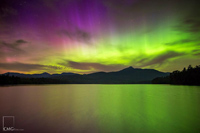
|
||
Make Magic with One Hot-Shoe Flash |
||||
 Steve Gottlieb
Bio • Website
|
Do your flash photos look flat and predictable? Do you often feel at the mercy of available light? With a little knowledge, practice and equipment, you can take control of light. This class demonstrates the basics of how best to make use of your hot-shoe flash, specifically: when to use it...how to combine it with available light...how to make it look like natural light...how to create more natural looking and varied event/party photos. Steve will also discuss the importance of being able to visualize a lighting result that is different from what you see in front of you.
Back to Top |

|
||
Publish Your Photo Book |
||||
 Steve Gottlieb
Bio • Website
|
Publishing a book of your own photographs used to be the province of a very limited number of professional photographers. No more. Nowadays, digital printing services enable every photographer—amateur and professional—to easily print their work in book form. Now you can share your knowledge, passion and images with others, while giving your work greater permanence. Steve explores how to:
Back to Top |
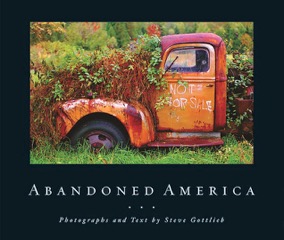
|
||
Finding Your Vision in Black & White: What the Masters Can Teach Us |
||||
 Leo Lubow
Bio • Website
|
B&W photography affords different creative opportunities than color. Leo reviews and discusses the work of such renowned B&W masters as Henri Cartier-Bresson, Alfred Eisenstaedt, Arnold Newman, Michael Kenna, Ansel Adams, Elliot Erwitt, Harry Callahan, and Diane Arbus. He wrestles with the inevitable question: What makes a great B&W photograph? Focusing on tone, texture, form, point of view, visual metaphor, narrative and the like, Leo identifies the elements that comprise a great B&W image. The objective is to help you refine both your eye and craft as you shape your own personal vision.
Back to Top |
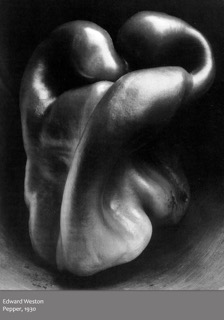
|
||
Street Photography: What the Masters Can Teach Us |
||||
 Leo Lubow
Bio • Website
|
Leo explores various styles of street photography by viewing and deconstructing the work of some noted masters: Henri Cartier-Bresson, Ray K. Metzker, Elliot Erwitt, Diane Arbus, Gary Winogrand, Saul Leiter, Steve McCurry, Bruce Gilden, Alex Webb, and Vivian Maier. He discusses how different underlying philosophies and visions of the world have driven each master's art. In his observations, he identifies tips and techniques that you can apply in this very special genre.
Back to Top |
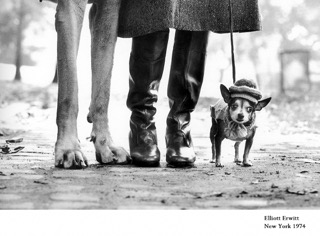
|
||
Using Social Media to Your Advantage |
||||
 Bob Madden
Bio • Website
|
Many photographers have a website where they display their work, provide contact information and perhaps sell their images. But their site is one of one billion sites in the world. No matter how many key words one uses, most search engines use algorithmic criteria ranking returns, making it difficult for users to find photographer's websites. So how do you drive traffic to your site? And, more generally, how do you get greater exposure for your images? In this class, Bob describes his strategies for using visual social media to broaden your reach. He reviews many of the popular websites such as Facebook (1.6 billion users); Instagram (400 million users); Twitter (100 million users); and Pinterest (100 million users) to illustrate ways to capitalize on their reach to build interest in your photography and your website. Bob also discusses the value of blogs, newsletters and freebees such as eBooks to enhance your photographic footprint as well as gather all-important email addresses.
Back to Top |

|
||
Travel Photography: The Good, the Bad and the Ugly |
||||
 Bob Madden
Bio • Website
|
Travel photography is an ever-popular and challenging activity. Almost everyone who takes pictures loves to capture their travel destinations in photographs. Often we travel just to give our eyes something fresh to visually inspire us. As a long-time National Geographic staff photographer as well as a free-lancer, Bob has traveled the world for decades. In this class, he illustrates tips and tricks to improve your travel pictures—including how to capture the feel of a place and how to get the cooperation of strangers. He shares some of the frustrations and joys garnered from his experiences around the globe. During the Q&A, Bob welcomes hearing some of the problems you've faced—he may have some valuable suggestions.
Back to Top |
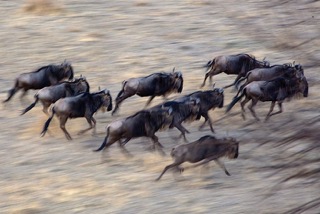
|
||
Camera Basics |
||||
 Hazel Meredith
Bio • Website
|
Whether your a beginner or someone who can benefit from brushing up on the basics, Hazel explains the key functions of your camera—what they are and when to use them. Specifically:
Note: While this class is geared towards digital SLRs, most functions also apply to mirrorless cameras. Back to Top |

|
||
HDR Imaging - Achieving the "Natural Look" [Sponsor: Photomatix] |
||||
 Hazel Meredith
Bio • Website
|
Our eyes can see a far greater range of light in a scene than our cameras/sensors can capture. When there are very bright highlights and/or deep shadows you can lose important detail. HDR (High Dynamic Range) processing enables you to record extremes of light and shadow that your camera cannot capture in a single image. Hazel shows how with HDR you merge multiple images of different exposures into one image, using a "tone mapping" process. HDR processing often produces a highly processed "grunge" look. This class shows you how HDR can create a natural look that reveal textures and details. Hazel demonstrates with Photomatix, a very popular HDR software.
Back to Top |
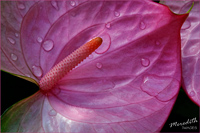
|
||
Topaz Plug-Ins |
||||
 Hazel Meredith
Bio • Website
|
Topaz is an amazing suite of 17 products! These Photoshop Plug-ins can be used to create stunning Black & White images and all manner of lens effects (glowing light, painting brushes and textures). Topaz can help you with better ways to mask and select difficult areas, sharpen, get rid of digital noise, and add clarity. There are thousands of creative photographic presets and "recipes" to make your images the best they can be. Hazel shares some of her favorite Topaz techniques and shows how she incorporates Topaz into her everyday workflow.
Back to Top |
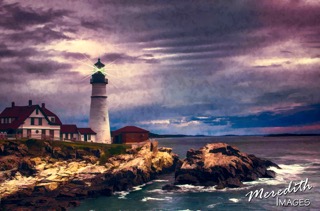
|
||
Creating Macro Images with DSLR and iPhone |
||||
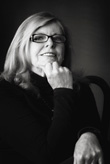 Karen Messick
Bio • Website
|
An amazing visual world opens up when you get up close...really close. Karen helps you see small subjects and get big results! She shares some of her favorite tools, lenses and techniques for creating macro images, both using your DSLR and iPhone. Karen illustrates here ideas about style and composition with a variety of images, showing you how to develop the eye needed to find the potential magic in the small details that are in front of you but usually remain unseen.
Back to Top |
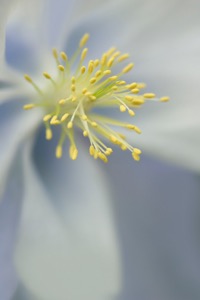
|
||
Drone Photography 101 |
||||
 Chris O'Connell
Bio • Website
|
Are you looking to dive into the world of aerial photography? Do you want to incorporate drones into your photograhy tool bag? Even if you aren't, aren't you curious about drones? Chris explains what it takes to begin, purchase and fly a drone. He'll discuss the latest in safety protocol and rapidly changing FAA regulations. Professional photographers will also find out what it takes to introduce aerial photography into existing business models. Our pilot will provide a live demonstration of a drone flight—weather permitting—plus there'll be a question and answer session.
Back to Top |
|||
Black and White Digital Processing: Generating Emotional Content |
||||
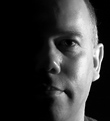 Arthur Ransome
Bio • Website
|
There are many techniques to produce digital black and white imagery. Arthur demonstrates his personal approach to the black and white digital darkroom. He takes you on a step-by-step tour, starting with an out-of-camera raw file and, using Adobe Photoshop and Nik Silver Efex Pro, creating finished black and white images ready for print or display on the web. Moving beyond purely technical matters, Arthur briefly explores how mastery of technique should serve the underlying goal of maximizing an image's visual and emotional content. [He explores this subject in much greater depth in his subsequent talk, Discover Yourself Through Photography.]
Back to Top |

|
||
Discover Yourself Through Photography |
||||
 Arthur Ransome
Bio • Website
|
Photography has the capacity to convey both subject and emotion. Whether we are photographing a friend or stranger, our pets, our backyard or a grand vista at a national park, we want our photographs to capture not only what we saw but what we felt. These feelings are personal—we are all individuals with our own thoughts, experiences and imagination—so each of us has different emotional responses to the subjects in front of our lenses. Expressing these inner feelings through photography can be a profoundly satisfying activity, one that adds depth and meaning to our lives. If our images stimulate feelings in others, our efforts even more satisfying. We want viewers (and ourselves, too) to feel an emotional relationship to the characters, places and events we photograph, and to hear the wind rustling through the leaves of the trees and feel the cold of a winter's day. How can we get in touch with our own emotions and infuse our images with those emotions? Departing from the colorful world we live in, Arthur takes you into his black and white world to show you how he expresses his emotions photographically. And he discusses how photographic style evolves as you cultivate and grow your emotional intelligence...and "discover yourself."
Back to Top |
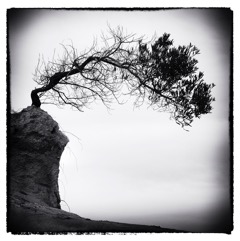
|
||
Food and other Stuff in the Studio |
||||
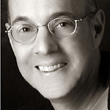 Rich Russo
Bio • Website
|
Still life photography can be a highly satisfying domain for photographers, yet it's one that relatively few amateurs explore. This introductory class covers the basics—from lighting to composition to styling—that are used in the studio to create high impact shots of food and other subjects. The techniques discussed in this class have application to many other genres of photography. (See Rich's Studio Portrait class for more about studio lighting.) With both demo and slide show, Rich covers the use of:
Back to Top |

|
||
Studio Portraits: Lighting and Posing |
||||
 Rich Russo
Bio • Website
|
Every photographer has shot people on location, usually with available light. Few have done portraits in the studio, which can seem foreign and even daunting. It needn't be. As Rich explains, the basic techniques for studio portraits—lighting and posing—are not that complex or difficult to master. Studio portraits open up major new avenues for your creative expression. The lighting and posing techniques discussed in this class are relevant to work outside the studio as well. (See Rich's Still Life class for more about studio lighting.) With both demo and slide show, Rich covers how to use:
Note: Depending on class size, there may be some time for hands-on shooting. Back to Top |
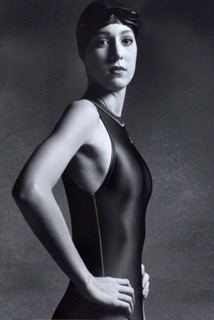
|
||
Recent work: Image Analysis |
||||
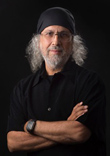 Tony Sweet
Bio • Website
|
Tony discusses various aspects of images he made during 2015. Compositional considerations, isolating and simplifying the subject, locations, times of year and times of day, equipment used and, more generally, his overall creative process at work.
Back to Top |
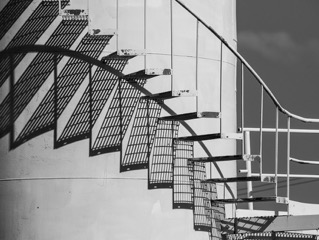
|
||
Understanding Textures |
||||
 Tony Sweet
Bio • Website
|
Textures are a great way to add an artistic, out of the box, look and feel to your images. Tony discusses various ways to apply textures, recommends excellent texture sets to buy, and reveals how to create your own. Software, filters, extensions, and blending/masking techniques are illustrated.
Back to Top |
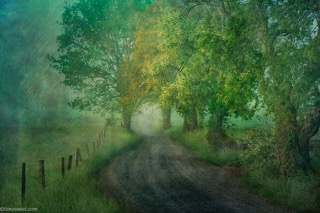
|
||
Panoramic Photography: Escaping the Normal Box |
||||
 Kelly Walkotten
Bio • Website
|
Given the right subject matter and composition, panoramas can be visually spectacular, not to mention a refreshing change from the traditional, predictable rectangular format. With advances in programming, making panoramas has never been so crazy easy! Kelly shows you how to edit your RAW files for panoramas and how to stitch multiple images together. She demonstrates some great finishing techniques to complete your creation. Finally, she gives shooting tips to create quality raw material for producing strong panoramas. (Note: Kelly will discuss Photoshop and Elements, but principles apply to any stitching/panorama program.) Back to Top |

|
||
Sharpening Techniques |
||||
 Kelly Walkotten
Bio • Website
|
How much sharpening does a photo need? The answer, of course, is: it depends. On the subject matter. On what you're trying to express. On whether you're sharpening the whole image. On the media where it will be seen. Kelly provides guidelines and starting points to help you examine these points. She starts with general all-purpose and web sharpening, then moves to sharpening softer subjects, portrait sharpening, and moderate vs maximum sharpening. She demonstrates selective sharpening by masking, luminosity sharpening, and edge sharpening. She concludes with some favorite advanced sharpening tricks. (Note: Kelly will discuss Photoshop and Elements, but principles apply to any sharpening program.) Back to Top |
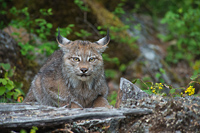
|
||
Underwater Photography |
||||
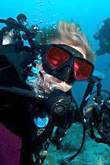 Kelly Walkotten
Bio • Website
|
How many photographers have seen underwater pictures and thought: "That looks so cool...I really should try that sometime." But where do you begin? Kelly helps take the mystery out of underwater photography. She shows you the essential equipment you need, the challenges you'll face and the rewards that await. Underwater photography is significantly different from shooting on land. Lighting and white balance are different down below. And there is movement (yours, the critters, the water currents) and some potentially dangerous situations, plus you need to maneuver with heavy scuba gear. (Kelly discusses snorkeling as well.) She takes you on a little dive without getting wet to show you what a wondrous world is open to those with an adventurous spirit.
Back to Top |
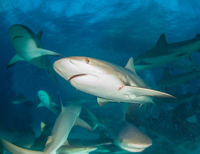
|
||
One-on-One Instruction |
||||
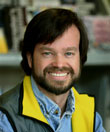 Dain Simons
Bio
|
Dain and John are former Summit instructors who will be offering camera basics instruction (Dain) and Lightroom (John).
Back to Top |
 John Lauritsen
Bio
|
||
